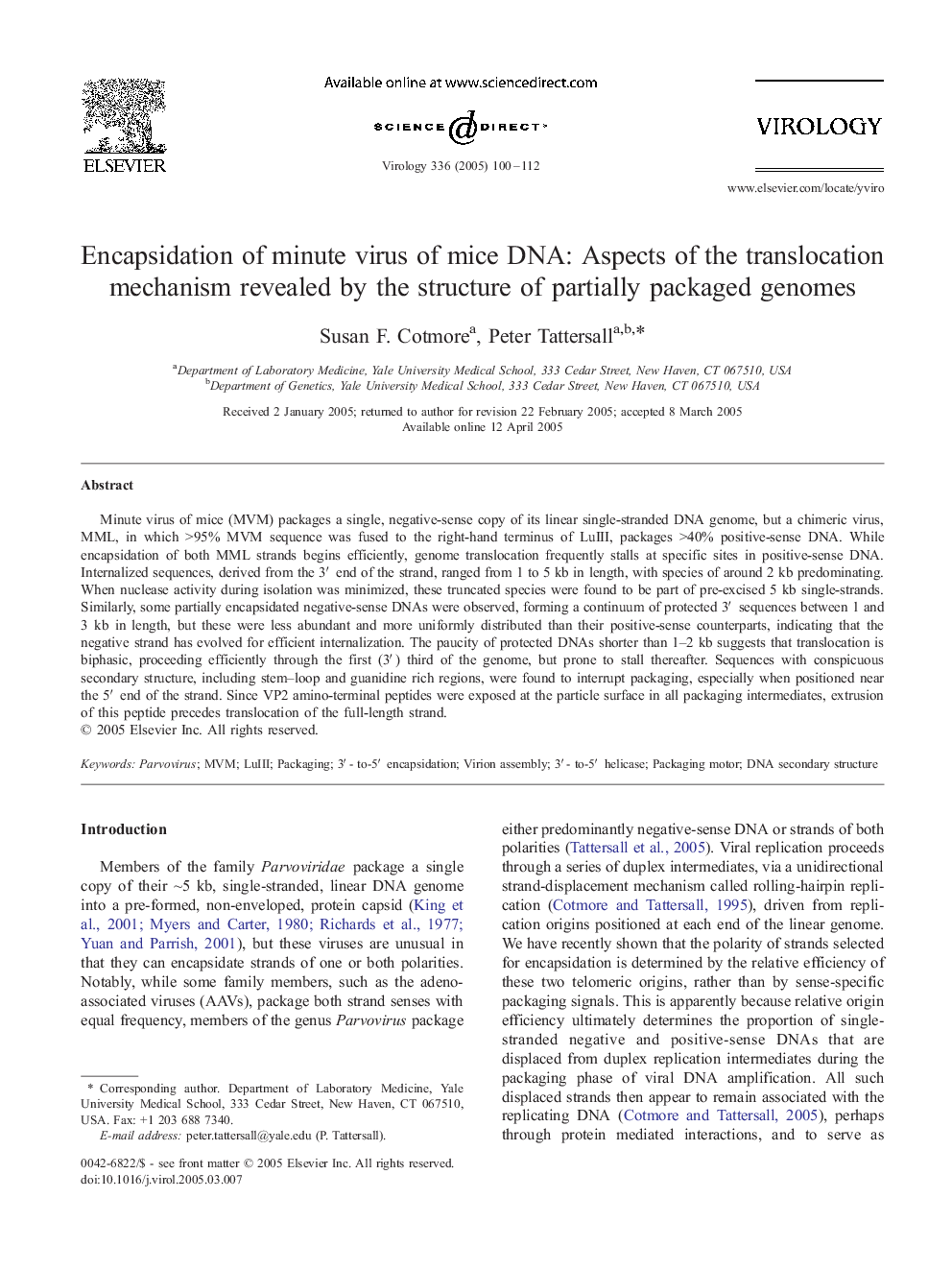| Article ID | Journal | Published Year | Pages | File Type |
|---|---|---|---|---|
| 9287030 | Virology | 2005 | 13 Pages |
Abstract
Minute virus of mice (MVM) packages a single, negative-sense copy of its linear single-stranded DNA genome, but a chimeric virus, MML, in which >95% MVM sequence was fused to the right-hand terminus of LuIII, packages >40% positive-sense DNA. While encapsidation of both MML strands begins efficiently, genome translocation frequently stalls at specific sites in positive-sense DNA. Internalized sequences, derived from the 3â² end of the strand, ranged from 1 to 5 kb in length, with species of around 2 kb predominating. When nuclease activity during isolation was minimized, these truncated species were found to be part of pre-excised 5 kb single-strands. Similarly, some partially encapsidated negative-sense DNAs were observed, forming a continuum of protected 3â² sequences between 1 and 3 kb in length, but these were less abundant and more uniformly distributed than their positive-sense counterparts, indicating that the negative strand has evolved for efficient internalization. The paucity of protected DNAs shorter than 1-2 kb suggests that translocation is biphasic, proceeding efficiently through the first (3â²) third of the genome, but prone to stall thereafter. Sequences with conspicuous secondary structure, including stem-loop and guanidine rich regions, were found to interrupt packaging, especially when positioned near the 5â² end of the strand. Since VP2 amino-terminal peptides were exposed at the particle surface in all packaging intermediates, extrusion of this peptide precedes translocation of the full-length strand.
Related Topics
Life Sciences
Immunology and Microbiology
Virology
Authors
Susan F. Cotmore, Peter Tattersall,
